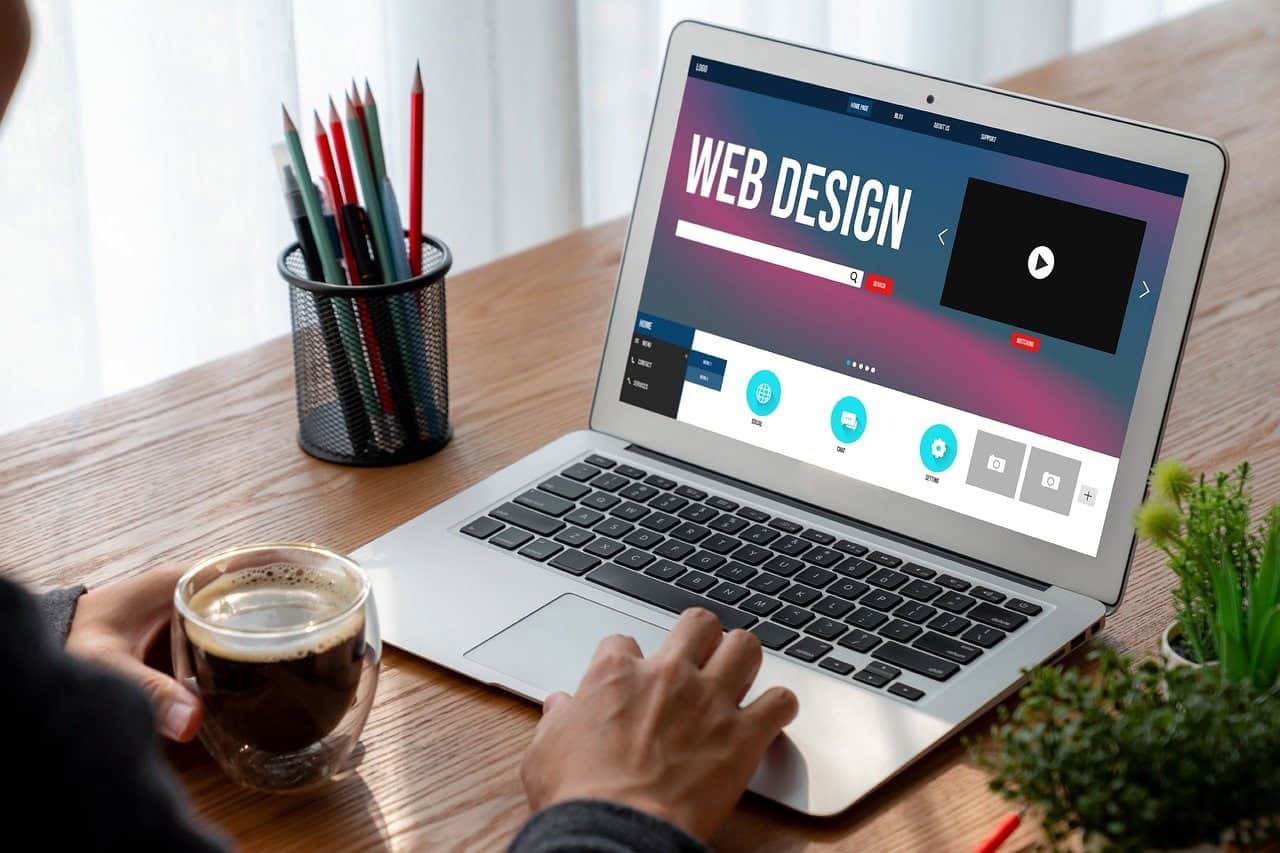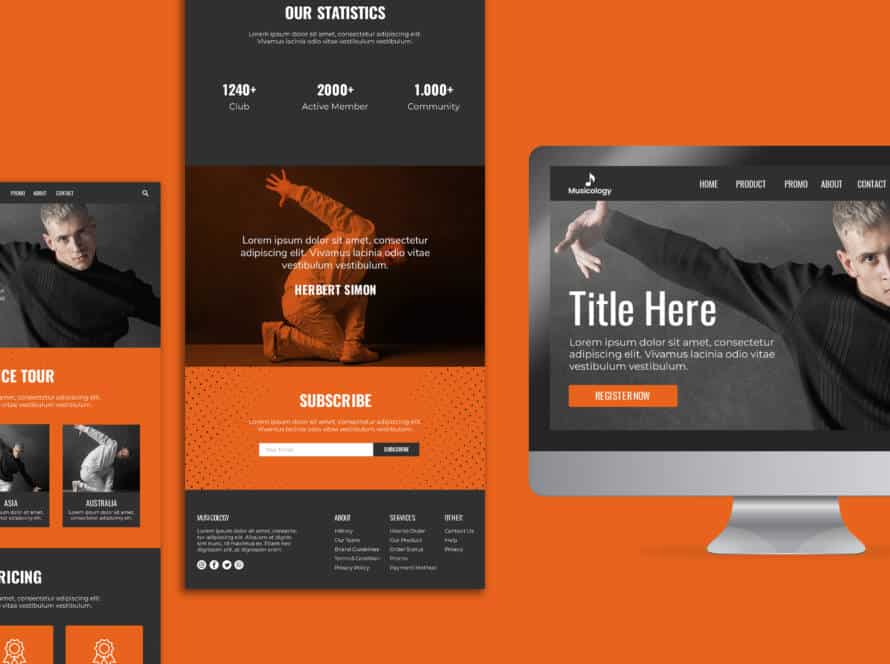A corporate homepage is far more than a digital business card,it is the gateway to your brand, the first touchpoint for prospects, and a strategic tool for driving engagement, credibility, and conversions. For corporate clients, the homepage must communicate authority, reflect brand values, and guide visitors intuitively toward meaningful actions.
In today’s competitive digital landscape, designing an effective corporate homepage requires a combination of strategic planning, visual design, UX expertise, and performance optimization. A corporate homepage is often judged in seconds, so every pixel, every word, and every interaction counts.
Below, we explore comprehensive strategies and expert tips for crafting a corporate homepage that not only looks professional but also performs effectively.
Understanding the Purpose of a Corporate Homepage
Before designing, it’s critical to define the purpose of your corporate homepage. Common objectives include:
- Building credibility and trust: Visitors should immediately recognize your professionalism and reliability.
- Communicating the brand message: Your homepage should clearly convey what you do, who you serve, and why you are different.
- Driving conversions: Whether it’s lead capture, newsletter signup, or product inquiries, the homepage must guide users toward measurable actions.
- Showcasing thought leadership and expertise: Highlight case studies, awards, and insights that position your company as a leader in its field.
Understanding these objectives ensures that every design choice, from layout to content placement, serves a strategic purpose.
1. Prioritize a Clean, Strategic Layout
A strong corporate homepage starts with a well-structured layout. The goal is to simplify user decision-making and prioritize information effectively.
Key considerations include:
- Logical navigation: Limit menu options to 5–7 key categories for clarity. Include a sticky or persistent menu for easy access.
- Visual hierarchy: Organize content so visitors can quickly identify key sections, such as services, case studies, or contact options.
- Whitespace and breathing room: Adequate spacing reduces cognitive load and emphasizes important content.
- Grid systems and responsive frameworks: Use CSS grids or frameworks like Bootstrap for consistent alignment across devices.
A well-structured layout ensures that visitors can engage with the site naturally, without confusion or friction.
2. Craft a Clear and Compelling Value Proposition
Your homepage should instantly answer: “Why choose this company?”
To maximize impact:
- Place your value proposition above the fold for immediate visibility.
- Use direct, benefit-oriented language—avoid industry jargon unless targeting highly technical audiences.
- Include supporting subtext or proof points, such as awards, client logos, or statistics.
Corporate clients respond best to precision and clarity—so every headline, tagline, and subheading should reinforce your brand promise.
3. Optimize for Mobile, Speed, and Accessibility
Corporate decision-makers often access sites on mobile devices during commutes or meetings. Optimizing for speed, responsiveness, and accessibility is no longer optional.
- Responsive design: Ensure layouts, images, and text adapt seamlessly across desktops, tablets, and smartphones.
- Performance optimization: Compress images, leverage browser caching, and minimize unnecessary scripts to reduce page load times.
- Accessibility compliance: Adhere to WCAG guidelines so users with disabilities can navigate and engage with your homepage.
Fast, accessible websites improve user satisfaction, reduce bounce rates, and contribute to higher search engine rankings.
4. Strategic Use of Visuals
Visuals can significantly impact engagement and perception of professionalism. However, corporate sites demand purpose-driven visuals rather than decorative imagery:
- Custom photography: Show real team members, offices, or client projects to build authenticity.
- Infographics and data visualization: Simplify complex information and demonstrate thought leadership.
- Consistent brand style: Ensure colors, typography, and graphic elements align with your corporate identity.
Visual storytelling reinforces credibility while guiding attention toward key messages and CTAs.
5. Incorporate Clear Calls-to-Action (CTAs)
Your corporate homepage should guide visitors toward measurable business outcomes. CTAs are central to this process:
- Use action-oriented copy (e.g., “Request a Demo” or “Schedule a Consultation”).
- Position CTAs strategically throughout the homepage, including above the fold, in service sections, and near testimonials.
- Consider secondary CTAs for visitors in early research stages (e.g., “Download Whitepaper” or “Explore Case Studies”).
Properly designed CTAs convert passive visitors into engaged leads without disrupting the user experience.
6. Build Trust with Social Proof and Industry Authority
Trust signals are critical in corporate homepage design. Visitors need to know they’re engaging with a reputable company:
- Client logos and testimonials: Highlight recognizable clients and positive feedback.
- Awards and certifications: Display professional recognitions and industry-standard certifications.
- Press mentions and partnerships: Feature mentions in reputable publications or collaborations with notable partners.
These elements subtly communicate reliability, professionalism, and credibility.
7. Persuasive Copywriting and Conversion-Focused Messaging
A great corporate homepage relies on copy that converts:
Headlines that capture attention: Focus on pain points or solutions.
Benefit-driven subheadings: Highlight outcomes clients care about.
Storytelling elements: Share short success stories or case studies.
Action-oriented CTAs: Encourage immediate engagement with verbs like “Schedule”, “Discover”, or “Start.”
Copywriting isn’t just words—it’s a conversion engine. Agencies like Bave Design Studio combine expert design with persuasive copy to ensure your homepage not only informs but converts.
8. Content Hierarchy and Readability
Users scan web pages rather than read every word. Effective corporate homepages are:
- Scannable: Use headings, subheadings, bullet points, and short paragraphs.
- Keyword-integrated: Include relevant keywords naturally to support SEO without keyword stuffing.
- Prioritized: Place critical information at the top, with additional details further down the page.
Readable content enhances engagement and ensures visitors can quickly find the information they need.
9. Advanced Technical Considerations
Beyond visuals and messaging, corporate homepage performance relies on technical best practices:
- Structured data (Schema markup): Helps search engines understand and display content more effectively.
- Lazy loading for images: Improves perceived page speed.
- SEO-friendly URL structures: Clear, concise URLs with target keywords enhance discoverability.
- Analytics integration: Track visitor behavior, conversions, and interaction to continuously optimize performance.
A technically sound homepage underpins all design and marketing efforts, ensuring long-term success.
10. Continuous Testing and Iteration
Corporate websites must evolve with audience expectations. Strategies for ongoing improvement include:
- A/B testing headlines, visuals, and CTAs.
- Heatmaps and session recordings to analyze user engagement.
- Regular content audits to update outdated information or enhance messaging.
- User feedback loops to capture real-world pain points.
Continuous iteration ensures your homepage stays effective, modern, and aligned with corporate objectives.
ance and performance.
Conclusion
A well-executed corporate homepage design is a strategic investment. By prioritizing clarity, responsive design, credibility, purposeful visuals, technical performance, and ongoing optimization, businesses can create a homepage that not only impresses visitors but also drives measurable results. Our Agency Bave Design Studio specialize in building such sophisticated corporate homepages, blending aesthetics, user experience, and technical excellence to maximize engagement and authority.
Ready to transform your corporate website? Schedule a consultation with Bave Design Studio today.
FAQs About Corporate Homepage Design
1. What makes a corporate homepage design effective?
Effectiveness comes from clarity, strategic layout, strong value proposition, intuitive navigation, and trust-building elements.
2. How important is mobile optimization for corporate websites?
Extremely important. Mobile-first design ensures accessibility, faster load times, and better user engagement, especially for busy professionals.
3. How can I balance visuals and performance?
Use compressed, optimized images, leverage lazy loading, and choose visuals that convey meaningful information rather than decorative fluff.
4. Are trust signals really necessary on a corporate homepage?
Yes. Testimonials, awards, client logos, and certifications reinforce credibility and increase the likelihood of conversions.




